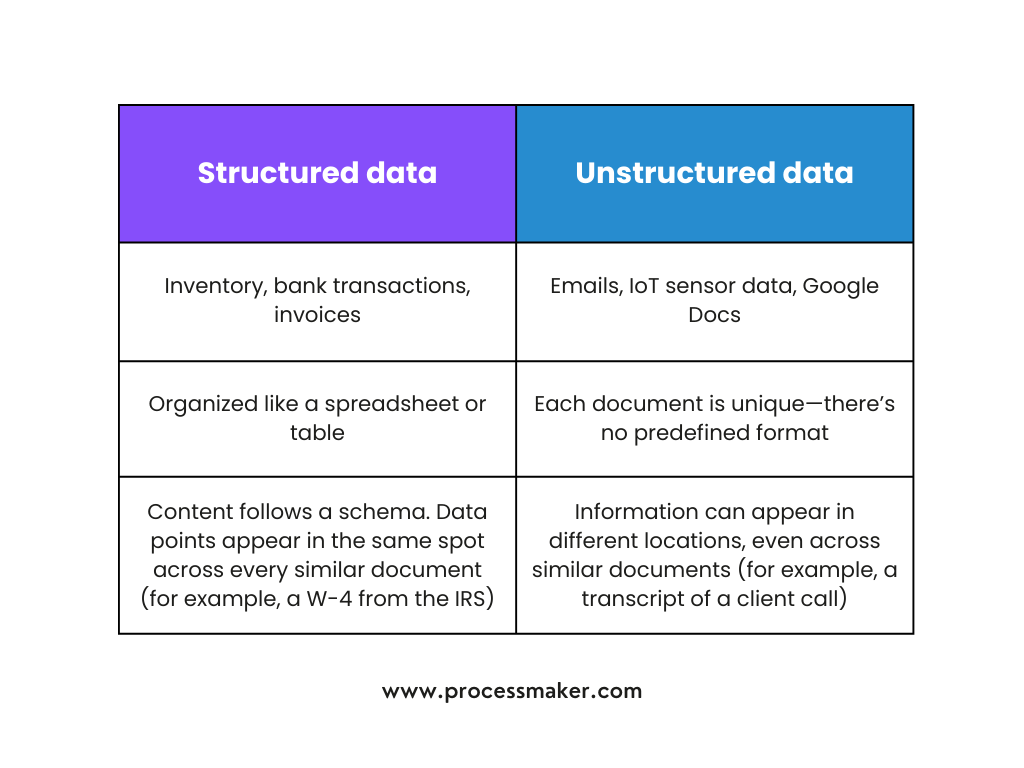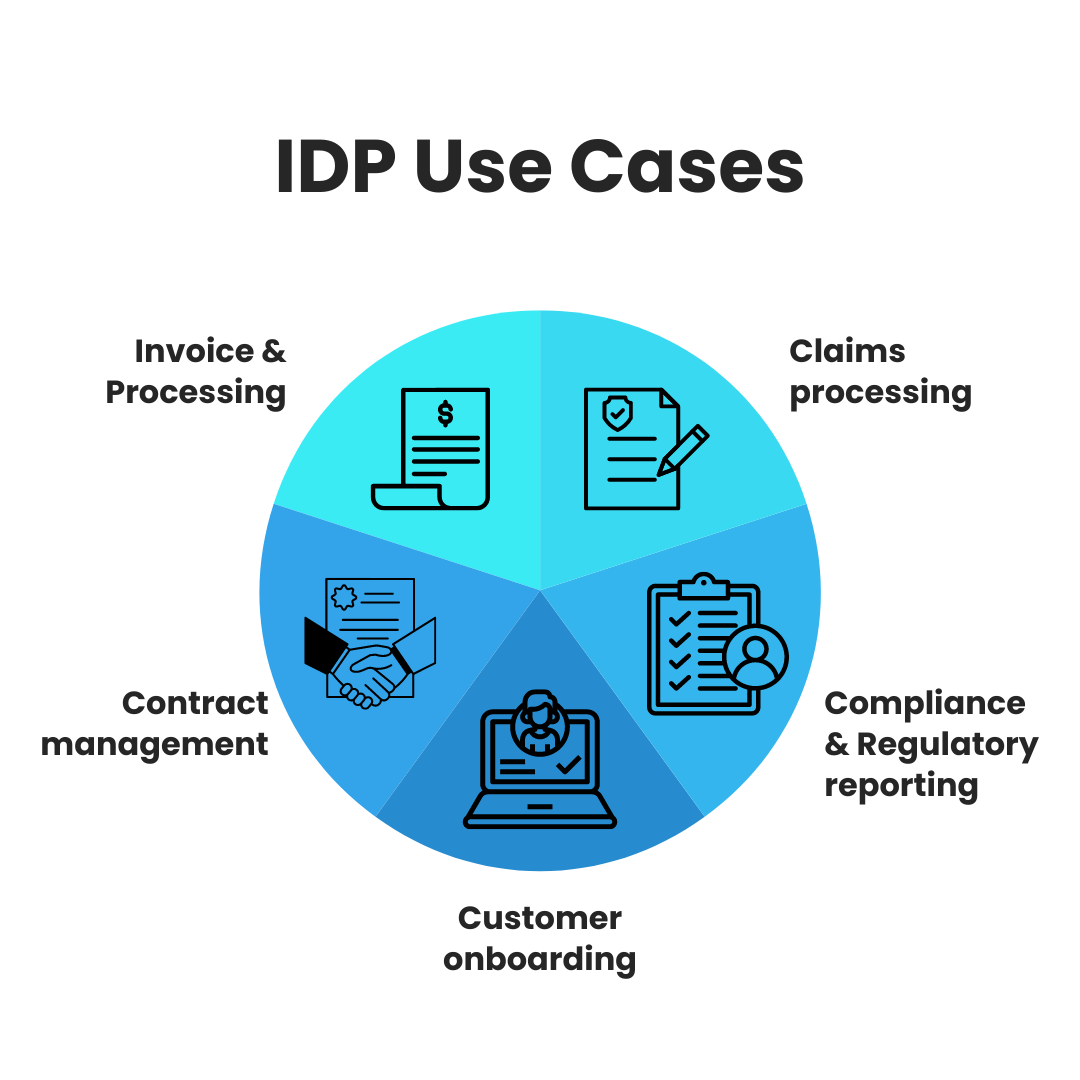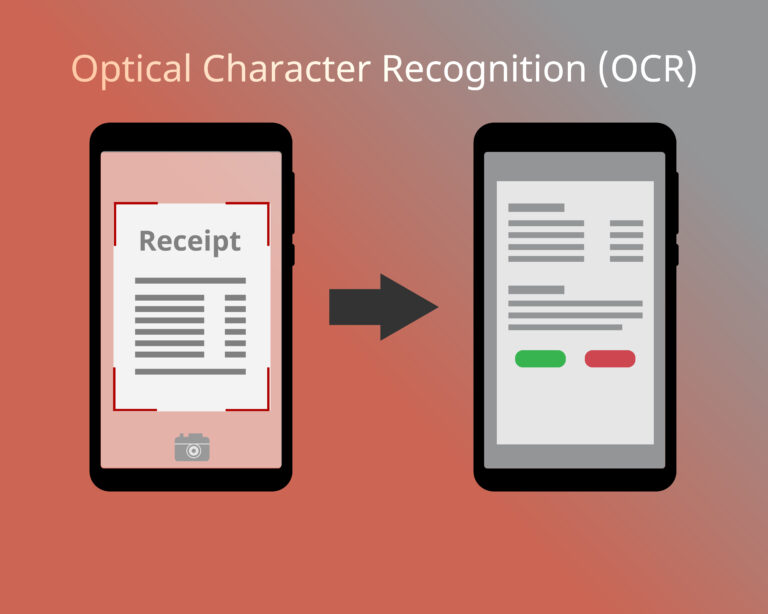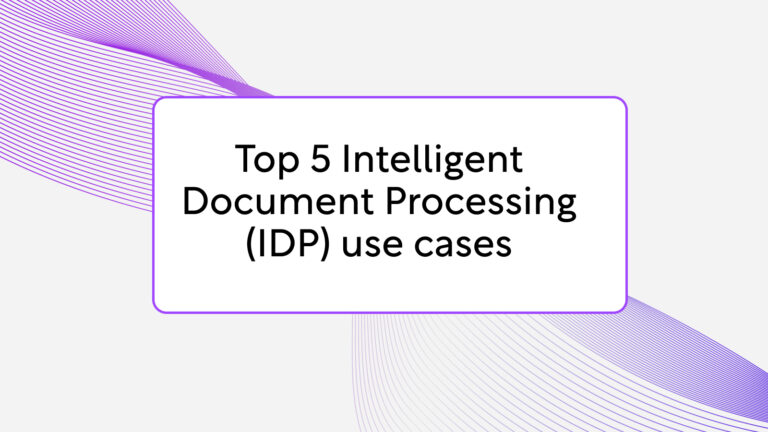Think about how much time it takes you to sort through endless amounts of unstructured documents, like invoices, sales contracts, and tax forms. Now cut that down by 75%. You have so many responsibilities in your position, and with so many responsibilities comes endless amounts of potential. But what if you aren’t being used to your full potential? What if your skills and expertise are being wasted on repetitive, complex tasks? What if there was a way to complete these tasks without you needing to lift a finger? That’s where Intelligent Document Processing (IDP) comes into play.
Here’s a quick overview of what we’ll cover in this article:
- What is intelligent document processing?
- What are unstructured documents?
- What’s the difference between IDP and RPA (Robotic Process Automation)?
- What are the benefits of IDP?
What is intelligent document processing (IDP)?
Intelligent document processing is a type of software that uses artificial intelligence and machine learning to automate the task of extracting data from documents. This can include simple tasks like sorting and filing documents to more complex tasks like extracting data for financial reporting or contract analysis.
What’s an unstructured document?
Unlike structured documents, unstructured documents are exactly how they sound: any kind of document that lacks clear and concise structure that can’t be easily automated with robotic process automation (RPA). Think tax forms, invoices, sales contracts, receipts, spreadsheets, etc.
Here’s a chart to give you a visual representation:

What’s the difference between robotic process automation (RPA) and intelligent document processing (IDP)?
To start, RPA is amazing at conquering the following:
- Copy and paste information between two spreadsheets or applications
- Move files between systems
- Manage databases
- Screen scrape
- Populate forms
- Prepare standard reports
But RPA isn’t as strong in these areas:
- Atypical layouts
- Unstructured documents, where information can appear in various locations (like emails, presentations, or books)
- Handwriting and funky fonts
In contrast, intelligent document processing solutions and use cases include:
- Converting words, numbers, and characters from a scan or image into editable text
- Claims processing
- Identifying and extracting information from unstructured, loosely formatted documents (like a birthdate buried in the text of an email)
- Preparing cleaner data by fixing splotchy or missing characters and reformatting inconsistencies
- Going beyond traditional search queries to help you find the right document using more nuanced language

The bottom line: RPA is an ace with structured documents, but it’s less intuitive with the opposite. IDP relieves you from the manual process of sorting through the documents that RPA can’t help you with.
What are the benefits of intelligent document processing (IDP)?
The benefits of Intelligent Document Processing are numerous, but here are just a few:
Increased Efficiency
IDP is the ultimate bottleneck preventer. It relieves you of the need for manual data entry, which enables businesses like yours to process documents rapidly and accurately. Essentially, automated data extraction reduces the chances of errors and minimizes the need for human intervention, saving time and effort.
Enhanced Accuracy
Just like with increased efficiency, IDP enhances accuracy by removing people from the equation. Intelligent algorithms in IDP systems are trained to accurately extract and validate information from various document types, including invoices, contracts, and forms. By minimizing human errors, IDP ensures data integrity and reduces the risk of compliance issues or financial inaccuracies.
Improved Scalability
These systems are highly scalable, enabling your business to easily handle large volumes of documents. Even if you’re processing hundreds or thousands of documents per day, IDP efficiently scales to meet your demands, ensuring smooth operations.
Accelerated Workflows
Businesses can achieve faster turnaround times in document-driven processes. By automating repetitive tasks, IDP expedites document processing, reducing cycle times and enhancing overall productivity. This makes it easier for you to meet critical deadlines, respond swiftly to customer inquiries, and improve customer satisfaction.
Reduced Cost
As you well know, manual document processing isn’t only time-consuming but costly as well. Since manual labor is significantly minimized, the overhead costs associated with document handling, data entry, and validation are reduced. You’ll be able to redirect your resources to more strategic and value-added tasks, maximizing operational efficiency.
Enhanced Compliance and Security
IDP also ensures a higher level of compliance and security by providing a comprehensive audit trail and access controls. With the ability to identify and flag potential compliance issues, you can proactively mitigate risks and ensure regulatory compliance, protecting sensitive information.
Insights and Analytics
IDP extracts data and provides valuable insights through analytics. You should use this extracted information to your advantage to gain deeper insight into your operations. In turn, you’ll be able to enable data-driven decision-making, process optimization, and strategic planning.
Integration with Existing Systems
IDP solutions seamlessly integrate with existing software applications and enterprise systems, such as Customer Relationship Management (CRM) and Enterprise Resource Planning (ERP) systems. This integration enables smooth data flow across the organization and facilitates cross-functional collaboration.

Best intelligent document processing software
IDP is gradually emerging as a highly valued product in the software as a service (SaaS) industry. With that being said, there are numerous software companies that provide IDP in their product, so it might be hard to choose which one is best for your organization. Chat with us to learn more about IDP and which software is right for you. At the end of the day, your company deserves to find the right fit, even if it isn’t us!





